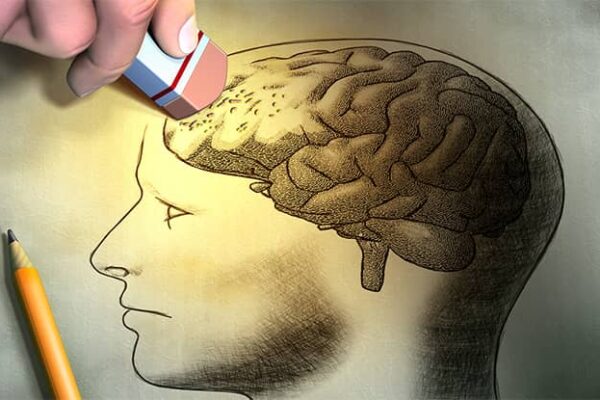In the modern world, where stress has become a constant companion in life, doctors increasingly encounter mysterious cases: patients undergo treatment for years for pain, skin conditions, digestive disorders, or blood pressure fluctuations, but traditional therapy provides only temporary relief. The cause of many such ailments lies not only in physiology but in the subtle and complex connection between the mind and the body—this is psychosomatics. A term that unites two fundamental aspects of health: “psyche” (soul) and “soma” (body). When inner experiences, suppressed emotions, or chronic stress find no outlet, they transform into physical symptoms—this is how the body signals that it needs help not only on a physical level but on a psychological one as well.
However, diagnosing psychosomatic disorders is not easy. Patients often turn to specialized doctors—cardiologists, gastroenterologists, neurologists—and receive treatment aimed only at the consequence, not the cause. Physicians, unable to assess a person’s psychological state, may spend years battling “unexplained” symptoms while the root of the problem goes unnoticed. Moreover, classical medicine still harbors skepticism toward psychosomatics: some specialists consider it “unscientific” or secondary, even though research has long confirmed that up to 50% of chronic illnesses have a psychogenic origin.
The relevance of this topic cannot be overstated. In an era of information overload, social instability, and high productivity demands, psychosomatic disorders have become a true epidemic. Insomnia, irritable bowel syndrome, panic attacks, autoimmune diseases—all of these can be the result of prolonged stress, unresolved conflicts, or emotional burnout. Yet many people facing such problems do not even realize that they need not just a pill but a comprehensive approach that considers both physical and mental well-being.
This is precisely why the key to addressing psychosomatic disorders lies in multidisciplinary medicine. Only in a multidisciplinary center, where not only somatic doctors but also psychologists, psychotherapists, and sometimes rehabilitation specialists work, can the true cause of an illness be identified and effective treatment be tailored. This approach shatters the stereotype that the “body” and the “mind” are treated separately and paves the way for genuine healing—not symptomatic, but profound and lasting. In this article, we will explore why psychosomatics requires special attention, how to recognize its manifestations, and why a comprehensive approach in a modern clinic may be the solution for those who have already lost hope of finding help.

What is Psychosomatics and How Does It Manifest?
We are used to thinking that bodily illnesses are treated with pills, while emotional struggles are addressed through conversations with a psychologist. But what if these two spheres are closely connected? Psychosomatics is a field in medicine and psychology that studies how our emotions, stress, and internal conflicts affect physical health. Simply put, when the psyche cannot handle the load, the body starts “screaming” about it through pain, rashes, or chronic fatigue.
Why does this happen? The brain perceives intense emotions as a threat and triggers a stress response in the body. If tension finds no outlet, it turns into a physical symptom. For example, constant anxiety can lead to high blood pressure, while suppressed anger can cause stomach inflammation. At the same time, the person often doesn’t even realize that the root of their problem is not a virus or genetics but unresolved psychological difficulties.
Scientific Explanation: How Emotions and Stress Affect the Body
The connection between the psyche and the body is not a myth but a scientifically proven fact. When we experience stress, hormones like cortisol and adrenaline are released into the bloodstream, preparing the body for “fight or flight.” This is useful in the short term—for example, if you need to dodge a car. But if stress becomes chronic, these same hormones begin to damage the body:
- Cardiovascular system: Constant blood vessel spasms due to stress lead to hypertension, arrhythmia, and increase the risk of heart attacks.
- Gastrointestinal tract: The gut microbiome is disrupted, causing spasms, heartburn, and irritable bowel syndrome (IBS).
- Immune system: Chronic stress weakens the body’s defenses, worsening allergies and autoimmune diseases.
- Muscles and joints: Unexpressed emotions cause tension, which turns into osteochondrosis, migraines, and back pain.
Research shows that people experiencing prolonged stress are 2-3 times more likely to develop chronic illnesses. The brain literally “translates” emotional pain into physical pain if a person cannot or does not want to acknowledge it.
Examples of Common Psychosomatic Disorders
Some illnesses are especially often linked to psychological factors:
- Migraines and tension headaches – occur in people who “overload” themselves with thoughts, fears, or excessive responsibility.
- Irritable bowel syndrome (IBS) – a classic example where anxiety and suppressed emotions cause spasms, diarrhea, or constipation.
- Hypertension – often develops in those who live in a state of hidden tension or suppress anger for years.
- Skin conditions (eczema, psoriasis, hives) – frequently flare up under stress, as the skin is closely connected to the nervous system.
- Insomnia – occurs when the brain cannot “shut off” due to anxious thoughts.
These conditions are difficult to treat if only the symptoms are addressed without working on their psychological cause.
Why Don’t People Connect Physical Symptoms to Psychological Problems?
First, we are used to believing that illness is something “tangible”—a virus, an injury, genetics. The idea that back pain could be caused by work stress seems strange.
Second, there is still a stigma around psychological issues in society. Many are afraid to admit even to themselves: “Yes, I’m struggling, I need help.” It’s easier to say, “I have a weak heart,” than, “I live in constant anxiety.”
Third, not all doctors pay attention to psychosomatics. If a patient complains of stomach pain, a gastroenterologist is more likely to prescribe a diet and pills than to ask, “What’s been eating at you lately?”
As a result, a person spends years treating the symptoms while the root cause remains in the shadows. But as soon as they start working on their psychological state, many symptoms disappear on their own.

Limitations of the Narrowly Specialized Approach
Modern medicine has achieved incredible heights in treating complex diseases. Cardiologists perform unique heart surgeries, oncologists defeat cancer, and endocrinologists correct hormonal imbalances. But when it comes to psychosomatic disorders, the traditional narrowly specialized approach often fails. Why? Because it views a person as a set of separate organs rather than as an integrated system where the psychological and physical are closely intertwined.
Patients with psychosomatic issues become trapped in “medical circles of hell”—they spend years going from one specialist to another, undergoing endless tests, trying different medications, but any improvement, if it occurs, is short-lived. The issue is that classical medicine, for all its achievements, often ignores the psychological factor of illness, treating it as something secondary or even imaginary.
Traditional Medicine vs. Psychosomatics: Why Medication Alone Is Not Enough?
Pharmacotherapy is a great achievement of modern science, but in the case of psychosomatic disorders, it often serves only as a temporary crutch. Antidepressants may relieve anxiety symptoms, antispasmodics may reduce stomach pain, and antihypertensives may lower blood pressure. But if the root cause—chronic stress, unexpressed emotions, or internal conflicts—is not addressed, the symptoms will return again and again.
The main problem with the medication-based approach is that it:
- Does not eliminate the source of stress.
- Does not change thought and behavior patterns.
- Does not teach healthy ways to cope with emotions.
- Often creates psychological dependence on medications.
Research shows that 60-70% of patients with “unexplained” chronic pain are found to have unresolved psychological issues upon detailed examination. In such cases, medications are like painkillers for a broken leg: they may relieve the pain, but normal function won’t return until the fracture heals.
Diagnostic Errors: When Doctors Look Only for Physiological Causes
A typical scenario for a patient with psychosomatic issues:
- They visit a doctor with specific complaints (pain, digestive issues, skin manifestations).
- The doctor orders a standard set of tests and examinations.
- When no organic causes are found, they may diagnose “autonomic dysfunction” or “functional disorder.”
- Symptomatic treatment is prescribed, which provides little relief.
- The patient begins to doubt: “Maybe it’s all in my head?”
Key diagnostic pitfalls:
- Overdiagnosis—searching for nonexistent physical pathologies.
- Underestimation of psychological status—doctors rarely ask about stress levels.
- Fragmented examination—each specialist looks only at “their” organ.
- Stigmatization—patients may be labeled as “faking it” if tests are normal.
Patients with rare or “invisible” symptoms—such as fibromyalgia or chronic fatigue—face particular challenges. They are often treated for years for nonexistent illnesses instead of being referred to a psychotherapist.
A Patient’s Story: “I Was Treated for Years, but Only a Psychologist Helped”
Anna, 34, a successful manager, sought help after seven years of unsuccessful attempts to treat a strange set of symptoms: debilitating headaches, episodes of rapid heartbeat, insomnia, and occasional skin rashes.
Her medical history was typical for many patients with unrecognized psychosomatics:
- Neurologists diagnosed “migraine” and prescribed painkillers.
- Cardiologists, finding no abnormalities on ECG, spoke of “autonomic dysfunction.”
- Dermatologists treated “allergies,” though tests showed no causes.
- Gastroenterologists found “superficial gastritis,” which didn’t explain the symptoms.
The next doctor Anna saw was more attentive. He noticed that:
- All tests and examinations showed normal results.
- Symptoms worsened during periods of work stress.
- Traditional treatment provided only temporary relief.
After consulting a psychologist, it was revealed:
- Anna had chronic stress due to fear of losing her job.
- She had suppressed emotions for years “to avoid appearing weak.”
- Perfectionism drove her to overwork.
- Her body signaled overload through various symptoms.
A comprehensive approach (medication + psychotherapy) yielded results:
- After 3 months, headaches became less frequent.
- After 6 months, sleep normalized.
- Skin manifestations disappeared completely.
The key takeaway from this story:
When doctors of various specialties find no physical causes for an illness, but symptoms persist—it’s time to consider the psychosomatic nature of the condition and consult a specialist who understands the connection between the mind and body.

Advantages of a Multidisciplinary Medical Center
When health begins to falter and the cause is unclear, many patients find themselves in a sort of “medical maze.” They are forced to independently schedule appointments with various specialists, repeatedly undergo the same tests, and—most importantly—piece together fragmented medical opinions on their own. It is in such cases that the advantages of a multidisciplinary medical approach become particularly evident.
A classic scenario: a person with chronic back pain visits a neurologist, orthopedist, and rheumatologist. Each specialist views the problem through the lens of their own field, yet a comprehensive picture never emerges. In a multidisciplinary center, this problem is addressed through a fundamentally different approach—here, the patient’s health is managed not by an individual doctor but by a coordinated team of specialists working toward a common outcome.
A Team of Specialists in One Clinic
The main competitive advantage of such centers is the ability to receive comprehensive diagnostics and treatment in one place. The standard “ensemble” of specialists typically includes:
- General physician – acts as the “conductor,” coordinating the work of all specialists.
- Neurologist – rules out organic causes of neurological symptoms.
- Endocrinologist – checks hormonal balance, which often affects emotional state.
- Psychologist/psychotherapist – identifies underlying psychological causes of ailments.
Advantages of this setup:
- Saves the patient time (no need to visit multiple clinics).
- All specialists have access to a unified medical record.
- Enables prompt consultations for complex cases.
- Ensures treatment plan consistency (eliminates conflicting prescriptions).
Comprehensive Diagnostics – From Tests to Psychological Assessments
Multidisciplinary centers offer a unique diagnostic chain:
- Laboratory tests (clinical and biochemical analyses).
- Instrumental diagnostics (ultrasound, ECG, MRI if necessary).
- Functional tests (evaluation of various bodily systems).
Psychological testing:
- Assessment of anxiety and depression levels.
- Analysis of coping strategies (stress management methods).
- Identification of psychological traumas and internal conflicts.
This holistic approach allows for:
- Early detection of diseases.
- Uncovering hidden connections between symptoms.
- Creating truly personalized treatment plans.
Individualized Approach – Treating the Cause, Not Just the Symptom
Unlike narrowly specialized clinics that often focus on treating a specific organ or system, multidisciplinary centers practice a holistic approach:
Creating a personal health profile (considering not only current condition but also lifestyle, dietary habits, and stress levels).
Developing a comprehensive treatment plan, which may include:
- Medication therapy.
- Physiotherapy procedures.
- Psychotherapeutic techniques.
- Lifestyle adjustments.
Regular monitoring of effectiveness with the ability to promptly adjust the treatment plan.

What Does Comprehensive Psychosomatic Treatment Look Like?
Overcoming psychosomatic disorders isn’t just about suppressing symptoms with pills or addressing psychological issues. It’s a process that requires a consistent and comprehensive approach. Imagine your health as a complex puzzle where physical and mental aspects are tightly interwoven. To solve this puzzle, you need to carefully examine all its pieces and connect them correctly.
A common mistake many patients make is stopping halfway. Some, after undergoing medical tests and finding no serious pathologies, decide to “tough it out.” Others, conversely, dive deep into psychological practices while ignoring the need for medical support. But only a combination of these approaches yields lasting results. Let’s break down what proper comprehensive treatment looks like, step by step.
Medical Examination (Ruling Out Organic Pathologies)
The first and mandatory step is a thorough “medical reconnaissance.” Why is this important? Because serious somatic conditions can sometimes hide behind psychosomatic symptoms. The examination typically includes:
Laboratory diagnostics:
- Complete blood count and biochemical analysis.
- Hormonal panel (especially thyroid and adrenal glands).
- Inflammatory marker tests.
Instrumental tests (depending on symptoms):
- Ultrasound of internal organs.
- ECG and echocardiography for heart-related complaints.
- MRI/CT for neurological symptoms.
- Gastroscopy for gastrointestinal issues.
Key point: A good doctor doesn’t just rule out diseases—they also explain the results to the patient. For example: “Your tests are normal, which means your pain is likely linked to your psychological state, and we’ll now explore that.”
Psychological Consultation (Identifying Stressors, Anxiety, Depression)
Once medical causes are ruled out, psychological diagnostics begin. This involves several stages:
Clinical interview:
- Analysis of the patient’s life situation.
- Stress level assessment.
- Identifying “triggers”—events that precipitated symptoms.
Psychometric testing:
- Anxiety and depression scales (HADS, Beck Depression Inventory).
- Tests for psychological trauma.
- Coping strategy evaluation (how the person handles stress).
Analyzing psychosomatic connections:
- What emotions are “locked” in the symptoms?
- What psychological meaning might the illness carry?
- What (even unconscious) benefits does the patient derive from their condition?
For example, a patient with chronic back pain might have:
- Unexpressed anger (“carrying too much on their back”).
- Fear of responsibility (“can’t stand straight under the weight of obligations”).
- An unacknowledged need for rest.
Integrating Methods (Medication + Psychotherapy + Physiotherapy)
The gold standard combines three approaches:
A. Medication (if needed):
- Short-term courses for acute symptoms (e.g., anxiolytics for panic attacks).
- Mild antidepressants for diagnosed depression.
- Drugs to improve cerebral circulation.
- Vitamin therapy (especially B vitamins and magnesium for stress).
B. Psychotherapy (core approach):
- Cognitive-behavioral therapy (addressing automatic thoughts).
- Body-oriented therapy (releasing muscle tension).
- Gestalt therapy (resolving unfinished emotional business).
- Self-regulation training (breathing exercises, meditation).
C. Physiotherapy and rehabilitation:
- Massage (especially for muscle tension).
- Acupuncture.
- Therapeutic exercise and yoga.
- Biofeedback therapy (learning to control physiological responses).
Example integration: A patient with irritable bowel syndrome might receive:
- Antispasmodics initially.
- Cognitive-behavioral therapy for anxiety.
- Diet adjustments + acupuncture for GI normalization.
Support and Prevention (Avoiding Relapses)
The final (but equally crucial) phase is learning to maintain progress. This includes:
A. Personalized prevention plan:
- Regular check-ups with a general practitioner.
- Maintenance psychotherapy (1–2 sessions/month).
- A self-observation journal for early symptom detection.
B. Stress-management skills:
- “Emergency” techniques for acute stress.
- Burnout prevention methods.
- Resource-restoration practices.
C. Lifestyle adjustments:
- Balancing work and rest.
- Incorporating regular physical activity.
- Improving sleep hygiene.
Key takeaway: Psychosomatics isn’t a life sentence—it’s a signal that your body needs a more mindful and caring approach. Comprehensive treatment doesn’t just eliminate symptoms; it teaches you to live in harmony with yourself, recognizing and respecting the signals from your body and mind.

When Should You Seek Comprehensive Help?
Many of us live with unexplained symptoms for years, attributing them to “bad ecology,” “age,” or “heredity.” We accept constant fatigue as normal, blame regular headaches on weather changes, and dismiss digestive issues as “eating something wrong.” But when your body repeatedly sends distress signals, it’s time to consider the deeper causes and the quality of medical care you’re receiving.
There’s a clear list of “red flags” indicating that you may need more than just another course of medication—you might require a comprehensive approach involving multiple specialists. This is especially important if you’ve already consulted several doctors, spent money on tests and treatments, and still haven’t seen improvement. Let’s explore when it’s time to look for a clinic that specializes in psychosomatic medicine.
The Illness Returns Despite Treatment
You notice that:
- Each treatment provides only temporary relief.
- Symptoms return in the same or a new form.
- You constantly need to increase medication dosages.
- Doctors shrug and say, “What do you expect at your age?”
Example: You treat gastritis, follow a strict diet, and take medication. The symptoms disappear, but as soon as you get stressed, everything starts again. This is a classic sign that the issue isn’t just (or even primarily) in your stomach—it’s your nervous system’s reaction to stress.
Tests Are Normal, but Symptoms Persist
A troubling situation when:
- Doctors find no objective cause for your condition.
- You’re told “it’s all in your nerves” or “just rest.”
- You feel like a “hypochondriac,” even though the symptoms are real.
- You start fearing you have “something rare and incurable.”
Be especially concerned if:
✓ Pain migrates (today your back hurts, tomorrow your head, then your stomach).
✓ Symptoms don’t fit a single disease pattern.
✓ Your condition worsens after emotional distress.
Flare-Ups During Stress
Clear signs of a psychosomatic origin:
- Symptoms intensify during work crunches.
- Health problems begin after major life events (divorce, job loss, moving).
- You feel significantly better on vacations or weekends.
- Physical discomfort appears after arguments or conflicts.
Try keeping a diary: Note when symptoms flare up and what events preceded them. If there’s a clear link to psychological factors, this strongly suggests the need for a comprehensive approach.
How to Choose a Multidisciplinary Center with Competent Specialists?
Criteria for a quality psychosomatic clinic:
1. Team of Specialists in One Place
- The staff should include not only somatic doctors but also clinical psychologists/psychotherapists.
- A good sign: having a psychoneurologist (a specialist bridging neurology and psychiatry).
- Ideally, there should be a case manager coordinating specialists’ collaboration.
2. Diagnostic Capabilities
The center should offer not just standard tests but also:
- Psychological assessments (anxiety, depression, stress resilience scales).
- Functional diagnostics (e.g., heart rate variability to measure stress levels).
- Advanced methods (biofeedback diagnostics, neurotests) if needed.
3. Integrative Treatment Approach
Programs should combine:
- Medication (when necessary).
- Various psychotherapies.
- Physiotherapy methods.
- Self-help training.
A good sign: group sessions (e.g., stress management classes).
4. Reputation and Reviews
- Read reviews not just about the center but about specific specialists.
- Pay attention to cases similar to yours.
- Be wary of promises of “quick cures”—psychosomatic work takes time.
5. Comfortable Environment
- In a good center, no one will say “it’s all in your head.”
- Specialists should explain every step of diagnosis and treatment.
- You should feel taken seriously.
Practical tip: Come to your first consultation with a prepared list of questions, such as:
- How do you determine if I need psychological support?
- Which methods have proven effective for my symptoms?
- How will specialists collaborate in my case?
Remember: Your health isn’t just a collection of separate organs—it’s a complex system where physical and mental aspects constantly interact. By choosing a comprehensive approach, you’re not just masking symptoms but addressing their root cause.

Conclusion
Our body is wiser than we often assume. When unexplained pains, strange symptoms, and treatment-resistant conditions persist for years—it’s not the body being capricious but sending us an important signal. Psychosomatics teaches us a simple yet profound truth: you cannot treat the body while ignoring the soul, and it’s pointless to work on the psyche while forgetting physiology. Those very “unexplained” migraines, blood pressure spikes, or skin reactions are often the cry of our nervous system, which has exhausted all other ways to tell us about overload, unprocessed emotions, or inner conflicts.
Modern medicine increasingly recognizes that the division between “real” physical illnesses and “just nerves” is artificial and outdated. Every cell in our body responds to our thoughts and experiences; every stress leaves a mark on our physiology. But there’s good news: this connection works both ways. When we start caring for our psychological state—learning to recognize and express emotions, setting healthy boundaries—our body responds with gratitude. Symptoms that resisted treatment for years gradually fade because their root cause is finally addressed.
If, after reading this article, you recognized yourself in these situations—don’t postpone self-care. Find specialists willing to see you as a whole, not just a collection of separate organs. Seek doctors who won’t dismiss your complaints but will strive to understand their true nature. Perhaps a comprehensive approach is the missing puzzle piece that will finally bring your health into focus.
Remember: lasting well-being isn’t the absence of disease but a harmonious state where body and mind work in sync. And achieving this state is entirely possible—if you approach it systematically and with the right specialists by your side.




